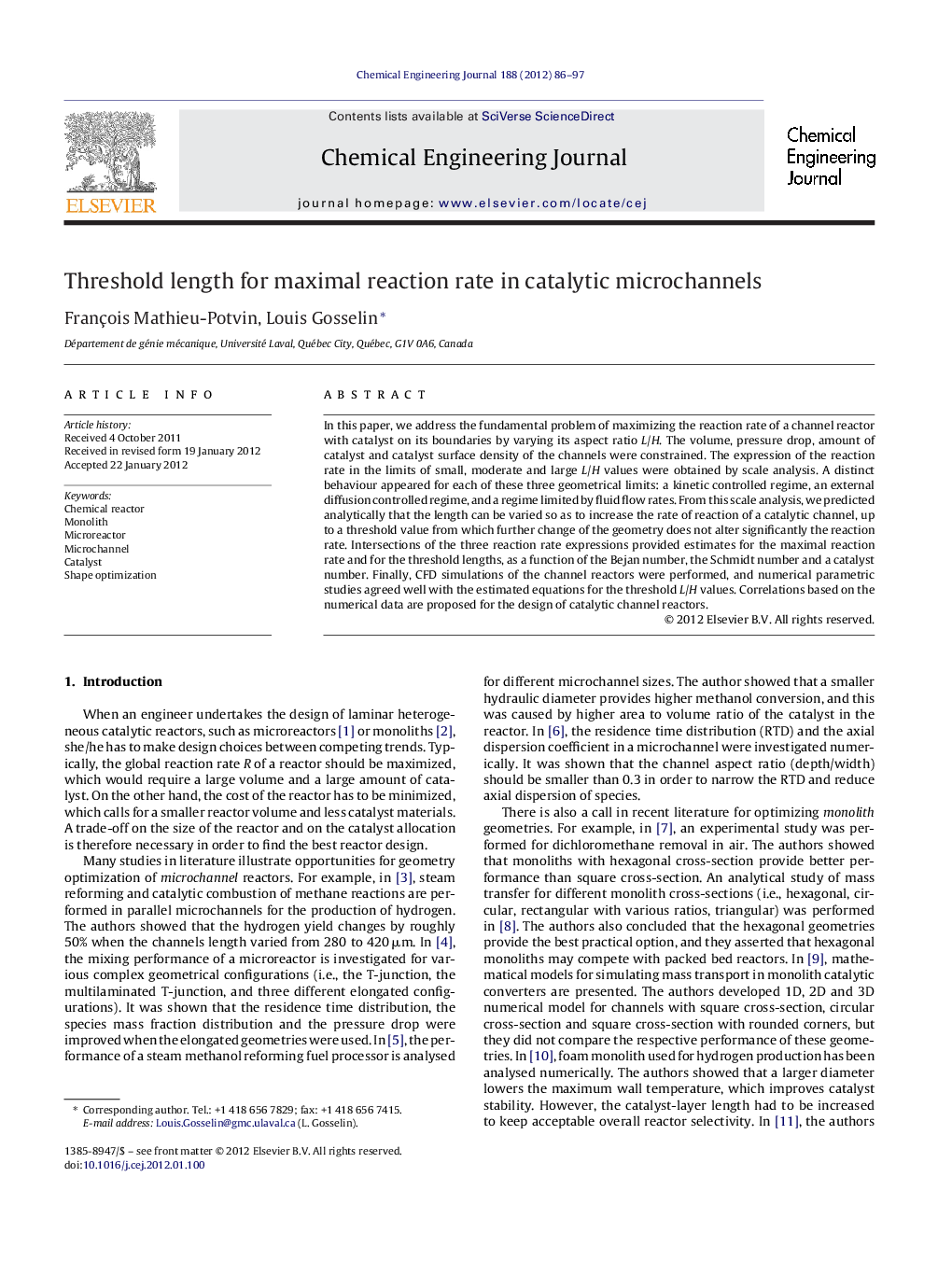| Article ID | Journal | Published Year | Pages | File Type |
|---|---|---|---|---|
| 150015 | Chemical Engineering Journal | 2012 | 12 Pages |
In this paper, we address the fundamental problem of maximizing the reaction rate of a channel reactor with catalyst on its boundaries by varying its aspect ratio L/H. The volume, pressure drop, amount of catalyst and catalyst surface density of the channels were constrained. The expression of the reaction rate in the limits of small, moderate and large L/H values were obtained by scale analysis. A distinct behaviour appeared for each of these three geometrical limits: a kinetic controlled regime, an external diffusion controlled regime, and a regime limited by fluid flow rates. From this scale analysis, we predicted analytically that the length can be varied so as to increase the rate of reaction of a catalytic channel, up to a threshold value from which further change of the geometry does not alter significantly the reaction rate. Intersections of the three reaction rate expressions provided estimates for the maximal reaction rate and for the threshold lengths, as a function of the Bejan number, the Schmidt number and a catalyst number. Finally, CFD simulations of the channel reactors were performed, and numerical parametric studies agreed well with the estimated equations for the threshold L/H values. Correlations based on the numerical data are proposed for the design of catalytic channel reactors.
► Threshold length values were identified to maximize reaction rate. ► Correlations for the threshold aspect ratio has been obtained for microreactors. ► For long channels, reaction rate is equal to upstream species mass flow rate. ► For moderate channel length, reaction rate is dictated by diffusion through boundary layers. ► For short channels, reaction rate is limited by chemical kinetics.
